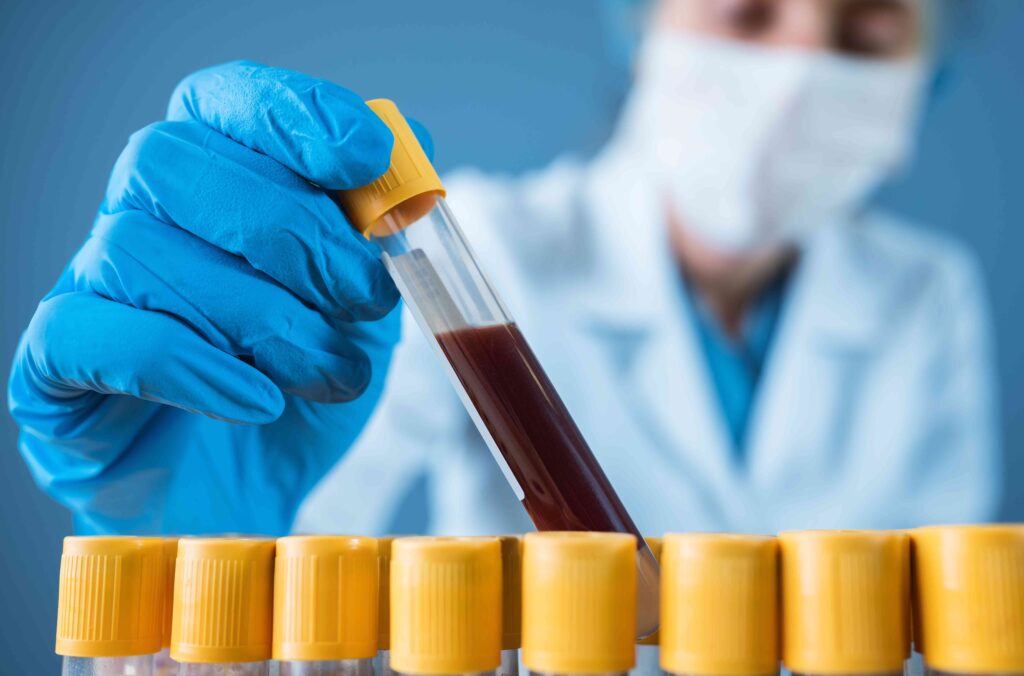:max_bytes(150000):strip_icc():format(jpeg)/Health-GettyImages-1187185032-a8645c558bb74ebf8234256b2c05a631.jpg)
The A/G ratio measures the total amount of protein in your body by comparing the amount of albumin and globulin. Your healthcare provider may recommend this test as part of a routine protein test called the comprehensive metabolic panel.
It also may be ordered if you are experiencing symptoms specific to liver disease, kidney disease, or malnutrition.
A phlebotomist is often responsible for performing the test. They withdraw blood from a vein in your arm. If the A/G ratio results are abnormal, it may indicate a serious underlying health condition.
The AG ratio test measures the ratio of albumin to globulin, the two main proteins in your blood. Albumin makes up 3.5 to 5.0 grams/deciliter of the total protein in your body, and the rest is globulins.
Albumin and globulin play different roles in the body. Albumin prevents fluids from leaking from your blood vessels into your lungs, abdomen, or other body parts. It also transports hormones, enzymes, and vitamins throughout the body. Globulins help fight infections, support blood clotting, and maintain liver function.
The A/G ratio test is typically included in the comprehensive metabolic panel, a routine protein blood test. The A/G ratio test can detect abnormalities in protein levels, but other tests might be essential to diagnose your underlying condition. Your healthcare provider may recommend the test if you are experiencing the following symptoms:
- Swelling in your feet, ankles, legs, or abdomen
- Sudden weight loss
- Fatigue
- Loss of appetite
- Nausea
- Blood in urine
- Yellowing of the skin and whites of eyes, known as jaundice
You may want to talk to your healthcare provider about how to prepare for the A/G ratio test. Here are a few things to keep in mind:
- Location: The procedure is performed at your healthcare provider’s office, clinic, or outpatient department.
- Attire: You do not need to change into a hospital gown for the test. However, because blood is drawn from a vein in the arm, it may be helpful to wear loose-fitting clothes that allow easy access to the arm.
- Food and drink: Ask if you can eat or drink before the test. Healthcare providers sometimes recommend fasting before the test.
- Medications: Certain medications may interfere with your A/G ratio results. Talk to your healthcare provider about your prescriptions and supplements. You may have to stop taking them before the test.
- Emotional support: Consider bringing someone with you for emotional support if blood tests cause anxiety.
- Cost and insurance: The A/G ratio is a routine test. Check with your insurance provider to understand whether they will cover the cost of the test.
The A/G ratio test collects blood samples from a vein in your hand, a process called venipuncture. The collection occurs at a healthcare provider’s office, clinic, or outpatient department. Talk to your healthcare provider to understand what to expect during the procedure. Here is an overview:
Before the Test
You likely won’t need to sign a waiver before undergoing the A/G ratio test. The test requires you to sit in a comfortable chair or lie down. The process of blood collection takes a few minutes.
Your healthcare provider may recommend that you fast for up to 12 hours before the test. Certain medications or nutritional supplements can interfere with test results. Inform your healthcare provider about what you are taking.
During the Test
Your blood will be drawn by your healthcare provider, a nurse, or a certified phlebotomist, a medical professional trained to draw blood from people.
Blood is taken from a vein inside the elbow or back of the hand. Before collecting blood, the collection tube will be labeled with your identification data. After this, the phlebotomist carries out the following steps:
- Clean the site with an antiseptic solution
- Place an elastic band on the upper arm to apply pressure to the area
- Insert the needle into a vein and collect the blood in an air-tight vial or tube attached to the needle
- Take out the needle and remove the elastic band from the arm
- Cover the area with a cotton pad or bandage
You may experience slight pain or a stinging sensation in the needle site, but these symptoms resolve quickly.
After the Test
You can leave almost instantly after the A/G ratio test and drive yourself home. Some people may experience dizziness or weakness after the test. In this scenario, your healthcare provider may ask you to stay until you feel better.
Your provider may also recommend not lifting heavy objects for 24 hours after the test. Doing so can put pressure on the injection site and cause bleeding.
The A/G ratio test requires blood samples through venipuncture. Venipuncture is most often a safe procedure with low risk. However, in rare cases, certain complications can arise after the procedure. These include:
- Pain in and around the needle site
- Infection at the needle site
- Abnormal clotting of blood
- Damage to surrounding nerves
The results of the A/G ratio test usually arrive within a few hours to days of the test. Follow up with your healthcare provider about the results. They will interpret them and determine whether you need more tests.
Interpreting Your Results
The normal A/G ratio value ranges from 1.0 to 2.0. A value less than 1.0 is mostly called a low A/G ratio, while a value greater than 2.0 is a high A/G ratio.
Low A/G Ratio
A low A/G ratio can mean that your albumin levels are too low or your globulin levels are too high. A low A/G ratio indicates that you may have one of the following conditions:
- Kidney disease
- Liver disease
- Malnutrition
- Certain types of cancer, including leukemia, Hodgkin’s disease, or multiple myeloma
- Autoimmune diseases
- Hemolytic anemia
- Malabsorption syndrome, where the small intestine cannot absorb enough nutrition from foods
- Thyroid disease
High A/G Ratio
A high A/G ratio means that your albumin levels are elevated or your globulin levels are low. A high A/G ratio may indicate you have one of the following conditions:
- Severe dehydration
- Diarrhea
- Antibody deficiency disorders
The A/G ratio test measures the total amount of protein in your blood by comparing the amount of albumin vs. globulin. The test involves the collection of blood samples from a vein in your arm.
Normal A/G ratio values range between 1.0 and 2.0. A low A/G ratio may mean you have liver disease, kidney disease, malnutrition, or certain cancers, while a high A/G ratio may indicate severe dehydration, diarrhea, or antibody deficiency disorders.



